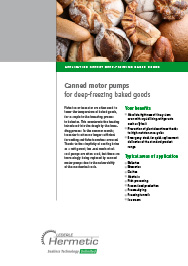Cooling brine
Cooling brine, also known as heat transfer fluid, is usually an aqueous salt solution used as a refrigerant at predominantly minus temperatures and thus retains its aggregate state throughout the entire cooling cycle. Additives in the brine can counteract any corrosion.
ADVANTAGES AND DISADVANTAGES
Chloride or carbonate brines are often used. Tyfoxit can serve as an example of a cooling brine. It is based on potassium acetate and, depending on the concentration, can be used down to temperatures of –55°C. In addition, Tyfoxit has a low viscosity, good refrigeration properties and is non-toxic. However, if Tyfoxit gets in contact with air, it can lead to crystallization for example in the event of a leakage.
PROPERTIES
- E. g. Tyfoxit F50
- Density (0 °C): 1366 kg/m3
- Spec. Heat (0 °C): 2.600 kJ/kgK
- Vapor pressure (20 °C): 0.002 MPA
